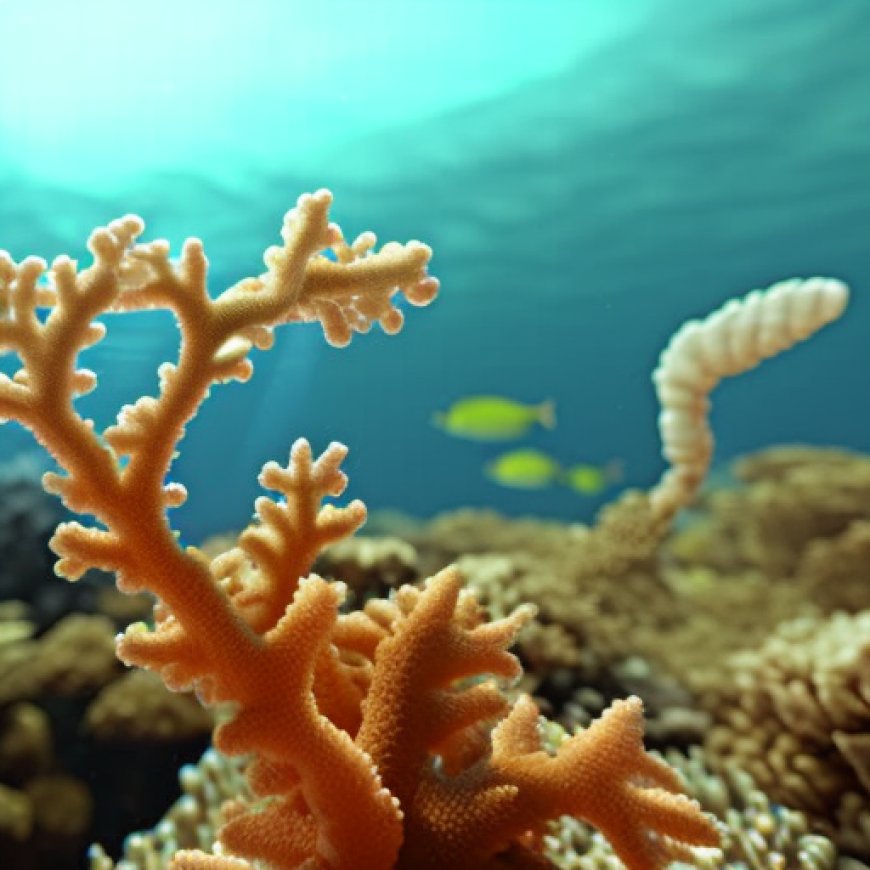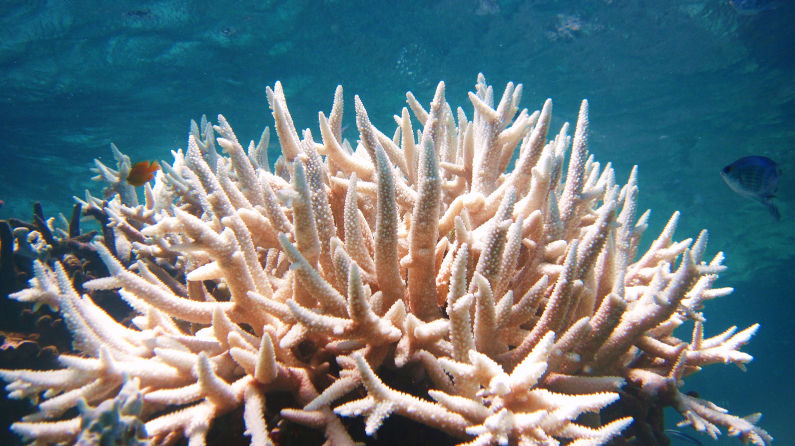NOAA warns world’s coral on verge of ‘Worst bleaching event in history of the planet’ – Pearls and Irritations
NOAA warns world's coral on verge of 'Worst bleaching event in history of the planet' Pearls and Irritations


Mass Coral Bleaching Event Threatens Southern Hemisphere Reefs

“It’s looking like the entirety of the Southern Hemisphere is probably going to bleach this year,” one scientist said.
Driven by sustained climate-fuelled oceanic heating, the planet is on the brink of another mass coral bleaching event that marine biologists warn could kill large swaths of tropical reefs including significant areas of Australia’s Great Barrier Reef.
Scientists are sounding the alarm following months of record ocean temperatures exacerbated by the planetary emergency and the El Niño climate pattern in the Pacific Ocean.
“It’s looking like the entirety of the Southern Hemisphere is probably going to bleach this year,” Derek Manzello of the National Oceanic and Atmospheric Administration’s (NOAA) Coral Reef Watch toldReuters. “We are literally sitting on the cusp of the worst bleaching event in the history of the planet.”
The Impact of Coral Bleaching
- When water is too warm, corals will expel the algae (zooxanthellae) living in their tissues causing the coral to turn completely white. This is called coral bleaching. When a coral bleaches, it is not dead. Corals can survive a bleaching event, but they are under more stress and are subject to mortality.
- In 2005, the U.S. lost half of its coral reefs in the Caribbean in one year due to a massive bleaching event. The warm waters centred around the northern Antilles near the Virgin Islands and Puerto Rico expanded southward. Comparison of satellite data from the previous 20 years confirmed that thermal stress from the 2005 event was greater than the previous 20 years combined.
Following the planet’s hottest summer on record last year, the Caribbean suffered its worst recorded bleaching event. The last worldwide bleaching occurred in 2014-17, when scientists say approximately 15% of all reefs experienced major coral deaths. Nearly a third of the Great Barrier Reef’s coral perished during the bleaching.
In the Southern Hemisphere, where summer is ending and ocean temperatures are at or near their annual peaks, there is “basically bleaching all over the place,” according to Manzello.
Matthew England, a professor at the University of New South Wales in Australia who studies ocean currents, recently toldTheNew York Times that “the sea ice around the Antarctic is just not growing” and “the temperature’s just going off the charts.”
“It’s like an omen of the future,” he added.
It’s a similar story in the North Atlantic, which “has been record-breakingly warm for almost a year now,” University of Miami hurricane expert Brian McNoldy told the Times. “It’s just astonishing. Like, it doesn’t seem real.”
Sustainable Development Goals and Coral Reefs
- A 2018 report from the United Nations Intergovernmental Panel on Climate Change estimates that global heating of 1.5°C is likely to result in the loss of 70-90% the planet’s coral reefs over the coming decades.
- Current emissions-based forecasts have Earth on track for at least 1.5°C of warming, which researchers say is likely to trigger five climate tipping points: melting of the Greenland and Antarctic ice sheets, mass die-off of warm-water coral reefs, thawing of Arctic permafrost, and collapse of the North Atlantic Subpolar Gyre circulation.
- The European Environment Agency’s long-term forecasts for 2071-2100 predict worldwide oceanic heating of 0.5°C-3.8°C, depending on future greenhouse gas emission scenarios.
Scientists say the best way to avert worst-case outcomes for both coral reefs and the climate is to swiftly transition from fossil fuels to renewable energy. Reducing land-based pollution and overfishing are also critical to reef preservation.
Republished from Common Dreams, March 5, 2024
SDGs, Targets, and Indicators
1. Which SDGs are addressed or connected to the issues highlighted in the article?
- SDG 13: Climate Action
- SDG 14: Life Below Water
2. What specific targets under those SDGs can be identified based on the article’s content?
- SDG 13.3: Improve education, awareness-raising, and human and institutional capacity on climate change mitigation, adaptation, impact reduction, and early warning.
- SDG 14.2: Sustainably manage and protect marine and coastal ecosystems to avoid significant adverse impacts.
3. Are there any indicators mentioned or implied in the article that can be used to measure progress towards the identified targets?
- Indicator for SDG 13.3: Number of countries implementing education and awareness-raising programs on climate change mitigation, adaptation, impact reduction, and early warning.
- Indicator for SDG 14.2: Percentage of marine and coastal areas protected and sustainably managed.
4. Table: SDGs, Targets, and Indicators
| SDGs | Targets | Indicators |
|---|---|---|
| SDG 13: Climate Action | Target 13.3: Improve education, awareness-raising, and human and institutional capacity on climate change mitigation, adaptation, impact reduction, and early warning. | Indicator: Number of countries implementing education and awareness-raising programs on climate change mitigation, adaptation, impact reduction, and early warning. |
| SDG 14: Life Below Water | Target 14.2: Sustainably manage and protect marine and coastal ecosystems to avoid significant adverse impacts. | Indicator: Percentage of marine and coastal areas protected and sustainably managed. |
Explanation:
1. The article highlights the issue of coral bleaching caused by climate change, which is directly connected to SDG 13: Climate Action. The warming of ocean temperatures and the need to transition from fossil fuels to renewable energy are key aspects of this SDG. Additionally, the article mentions the loss of coral reefs, which falls under SDG 14: Life Below Water, as coral reefs are important marine ecosystems.
2. Based on the article’s content, the specific targets that can be identified are SDG 13.3: Improve education, awareness-raising, and human and institutional capacity on climate change mitigation, adaptation, impact reduction, and early warning, and SDG 14.2: Sustainably manage and protect marine and coastal ecosystems to avoid significant adverse impacts.
3. The article implies indicators that can be used to measure progress towards the identified targets. For SDG 13.3, the indicator could be the number of countries implementing education and awareness-raising programs on climate change mitigation, adaptation, impact reduction, and early warning. For SDG 14.2, the indicator could be the percentage of marine and coastal areas protected and sustainably managed.
4. The table presents the findings from analyzing the article, listing the SDGs, their corresponding targets, and the specific indicators identified in the article.
Behold! This splendid article springs forth from the wellspring of knowledge, shaped by a wondrous proprietary AI technology that delved into a vast ocean of data, illuminating the path towards the Sustainable Development Goals. Remember that all rights are reserved by SDG Investors LLC, empowering us to champion progress together.
Source: johnmenadue.com

Join us, as fellow seekers of change, on a transformative journey at https://sdgtalks.ai/welcome, where you can become a member and actively contribute to shaping a brighter future.







